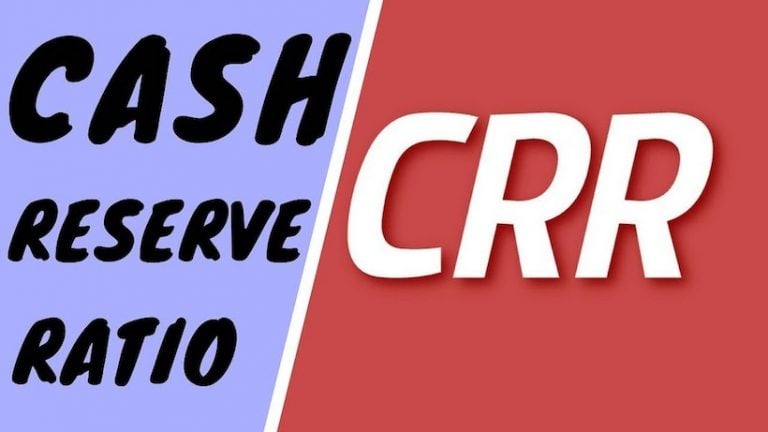Cash Reserve Ratio (CRR): In terms of Section 42 of the RBI Act every scheduled bank in India is required to maintain an average daily balance the amount of Cash Reserves with RBI as a percentage of Total Net Demand and Time Liabilities in India. Reserve Bank notifies the percentage of CRR to be maintained by banks at regular intervals through gazette notifications
Cash Reserve Ratio (CRR)
The main purpose of maintaining CRR by the banks is to secure the monetary stability of the country. By increasing the CRR or decreasing the CRR the lendable resources of a bank can be reduced or increased. This would lead to scarcity of availability of funds or increase in availability of funds in the economy resulting in a deflationary or inflationary effect.
Cash Reserve Ratio (CRR) is a specified minimum fraction of the total deposits of customers, which commercial banks have to hold as reserves either in cash or as deposits with the central bank. according to the
When the RBI Act was introduced, the minimum and maximum floor rates of this ratio to be maintained by banks was specified between 3% to 20% .This was amended 2006 and floor rates were abolished, to give RBI the flexibility to decide and announce the percentage of CRR to be maintained by banks from time to time keeping in view the monetary situation prevailing in the country. By varying CRR, RBI can expand or contract the credit extended by a bank, thus affecting the quantum of credit a bank can extend.
All scheduled banks and Non-scheduled banks have to maintain CRR as per Sec 18 of the RBI Act. Banks have to calculate the CRR on the basis of their respective demand and time liabilities as on the Friday of second preceding fortnight. Reserve Bank of India has prescribed statutory returns i.e. Form A Return (for CRR) under section 42(2) of the RBI Act, and Form VIII Return (for SLR) under section 24 of the Banking Regulation Act, 1949.
In addition to the above an incremental CRR in terms of section 42(1A) also need to be maintained as advised by RBI from time to time. At present no incremental CRR need to be maintained. Provisional return of Form A to be submitted by banks within 7 days and final Form A to be submitted within 20 days from expiry of the relevant fortnight.
As per the latest directions after calculations, each bank has to maintain at least minimum CRR balances up to 90 per cent with effect from the fortnight beginning April 16, 2016.
According to RBI, the following are liabilities for the purpose of computation of CRR:
- a. Liabilities to the banking system computer under Section 42 (1) of the RBI Act.
- b. Credit balances on Asian Currency Union (US Dollar) Account.
- c. Demand and Time liabilities of the respective banks off-shore units.
With effect from March 31, 2007 RBI has discontinued paying interest on CRR balances maintained by banks with RBI.
Since June 24, 2006 if a bank defaults in maintaining CRR on daily basis RBI has powers to recover penal interest at the rate of 3% p.a. over Bank Rate on the amount which falls short of the balances on that day. If the short fall continues subsequently on succeeding days, the penal rate will be recovered at a rate of 5% p.a. over Bank Rate.
Presently banks have to maintain 4% of their Net Demand and Time liabilities as CRR.
Recommended Articles
